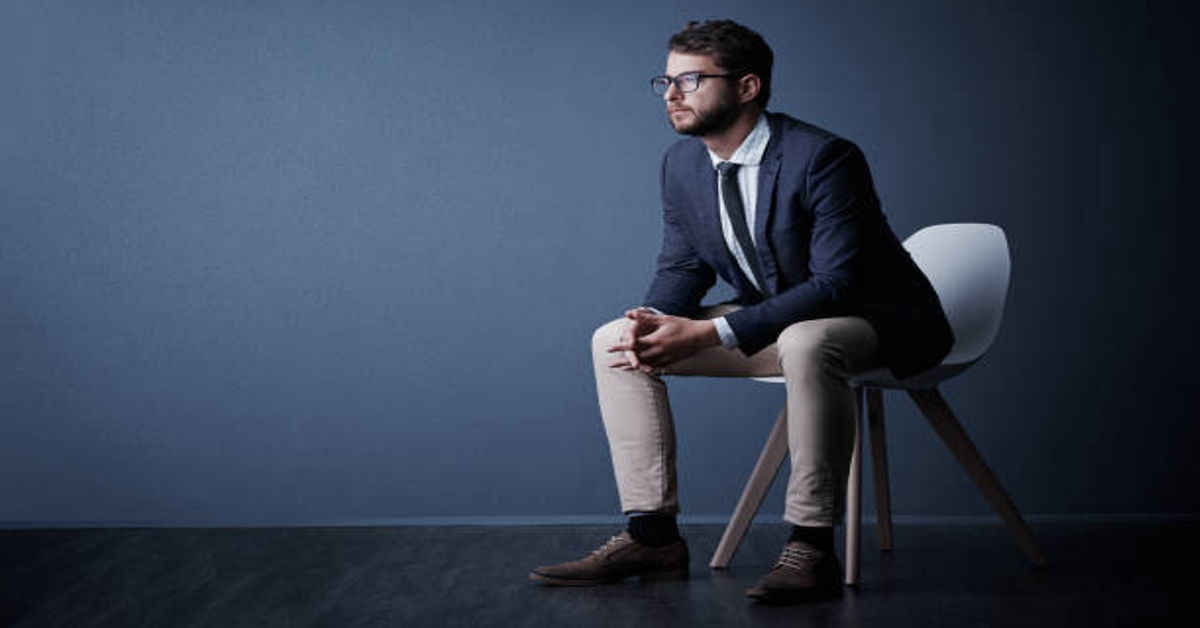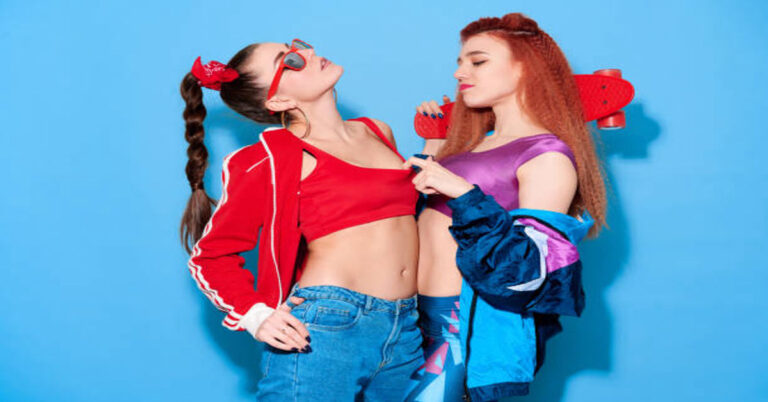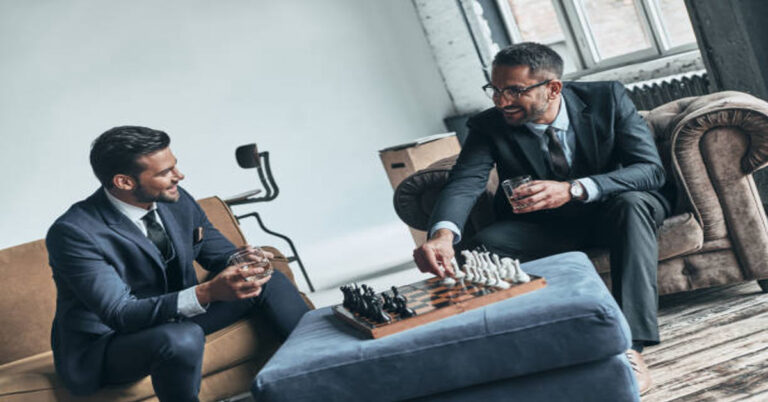Smart Casual: The Perfect Balance Between Comfort and Class
Fashion has always been more than the clothes we wear. It’s a language — a silent communicator that expresses confidence, identity, and intent. Within this language, there exists a style category that gracefully balances the line between formal structure and relaxed comfort. That category is Smart Casual.
The term “smart casual” might sound simple, but it carries layers of meaning, sophistication, and context. It represents not just a dress code, but an attitude — one that reflects awareness, adaptability, and refinement. To dress in smart casual means to understand the event, the environment, and oneself. It’s about merging the precision of formalwear with the ease of casual attire in a way that feels intentional yet effortless.
This article explores every aspect of smart casual dressing — its origins, its evolution, its gender-neutral principles, its practical applications, and how to master it for every occasion.
1. Understanding What Smart Casual Really Means
Smart casual is one of the most versatile dress codes in modern society. It sits neatly between formal and casual, combining elements of both without leaning too heavily in either direction. In essence, it is the art of balance — structured enough to appear polished, but relaxed enough to feel comfortable.
Imagine a person wearing a crisp button-down shirt paired with tailored trousers and leather loafers — no tie, no rigid suit jacket, but still looking refined. That’s smart casual. Similarly, a woman in a blouse, well-fitted jeans, and block heels projects the same aura of casual sophistication.
Smart casual is not about labels or luxury brands. It’s about presentation and harmony — how each piece complements the other to create a cohesive, intentional look.
| Style Level | Typical Example | Occasion |
|---|---|---|
| Casual | T-shirt, jeans, sneakers | Weekend outing, informal event |
| Smart Casual | Blazer, chinos, loafers | Dinner, networking, creative workspace |
| Business Casual | Shirt, dress pants, leather shoes | Office setting, business lunch |
| Formal | Suit, tie, dress shoes | Corporate meeting, wedding |
The beauty of smart casual lies in its flexibility. It can adapt to cultures, climates, and personalities while maintaining its core principle: looking composed without overdoing it.
2. The Origins and Evolution of Smart Casual
Although “smart casual” may sound like a modern invention, the concept traces back nearly a century. It first emerged in the early 20th century as workplaces and social norms began to relax. After decades of strict formal dress codes dominated by suits and ties, people started seeking a balance between formality and comfort.
In the 1950s and 1960s, post-war culture introduced more freedom in personal expression. Men began experimenting with sport coats, open collars, and loafers instead of the rigid three-piece suits. Women, too, moved toward lighter fabrics and more fluid silhouettes that combined professionalism with comfort.
By the 1980s and 1990s, “business casual” and “smart casual” became common workplace terminology as corporate environments evolved. The rise of creative industries — advertising, design, technology — encouraged employees to look professional without appearing overly corporate.
Today, smart casual is not bound by location or profession. It’s equally at home in a tech startup office, a dinner party, or an art gallery opening. Its endurance lies in its adaptability — it evolves with culture, but its essence remains timeless.
3. The Core Philosophy Behind Smart Casual
The essence of smart casual dressing can be understood through three foundational principles:
- Balance: Combining structured and relaxed elements harmoniously.
- Intentionality: Every piece should look purposeful — nothing should appear accidental or careless.
- Fit and Quality: Even the simplest outfit can look elevated if it fits well and is made from good materials.
Smart casual isn’t about dressing up; it’s about dressing appropriately. The goal is to appear put-together without seeming overdressed. It’s the visual equivalent of speaking eloquently in a casual conversation — graceful, approachable, and natural.
4. Smart Casual for Men: A Comprehensive Guide
Men’s smart casual attire is built around versatility and subtle sophistication. It allows room for personal flair while maintaining polish. Below are the key components every man should understand when crafting a smart casual outfit.
A. Tops
- Button-down shirts are the foundation — ideally in solid colors or gentle patterns like stripes or checks.
- Polo shirts can replace formal shirts in warm weather while maintaining a neat look.
- Light sweaters, especially those made of cotton or merino wool, work beautifully over collared shirts.
B. Bottoms
- Chinos are the hallmark of smart casual. They bridge the gap between jeans and dress trousers.
- Dark, fitted jeans can be appropriate if they are free from rips or fading.
- Tailored trousers add a slightly more polished edge without being overly formal.
C. Footwear
- Loafers, brogues, or leather sneakers are the ideal footwear for smart casual.
- Avoid athletic shoes or overly casual flip-flops, which clash with the polished aesthetic.
D. Layers
- Blazers are the ultimate smart casual upgrade. A single-breasted, unstructured blazer in neutral tones can elevate any look.
- Cardigans or vests add texture and sophistication in cooler months.
E. Accessories
- Opt for leather belts, minimalist watches, and subtle pocket squares.
- Avoid loud or flashy jewelry — the focus should remain on clean, coordinated elegance.
| Occasion | Example Outfit |
|---|---|
| Business Lunch | Navy chinos, white shirt, brown loafers |
| Dinner Date | Grey blazer, dark jeans, black Chelsea boots |
| Casual Friday | Polo shirt, khaki trousers, leather sneakers |
5. Smart Casual for Women: Elegance with Ease
Women’s smart casual dressing offers even greater creative freedom, blending textures, colors, and silhouettes while maintaining refinement. The key is to balance femininity and professionalism with comfort.
A. Tops
- Blouses and button-ups in silk, cotton, or satin are staples.
- Knit tops or fine turtlenecks bring warmth and structure.
- Blazers or structured cardigans add sharpness when paired with soft fabrics.
B. Bottoms
- Tailored trousers or high-waisted slacks work perfectly for office and social occasions.
- Dark jeans paired with elegant tops keep the look relaxed yet neat.
- Midi skirts or pencil skirts add a refined, graceful touch.
C. Dresses
- Knee-length or midi dresses in neutral or soft tones fit most smart casual occasions.
- Avoid overly formal gowns or very casual sundresses.
D. Footwear
- Block heels, loafers, ballet flats, or ankle boots define the category.
- Comfort matters — avoid stilettos unless the event leans semi-formal.
E. Accessories
- Keep jewelry simple — gold hoops, pearl earrings, or delicate chains.
- A structured handbag completes the smart casual look beautifully.
| Occasion | Example Outfit |
|---|---|
| Work Meeting | Blouse, tailored pants, loafers |
| Art Gallery | Midi dress, block heels, clutch bag |
| Dinner with Friends | Knit top, dark jeans, ankle boots |
6. Smart Casual Across Different Environments
Smart casual doesn’t mean the same thing everywhere. What’s appropriate in a coastal café may differ from a corporate office or an upscale restaurant. Adapting your smart casual outfit to the environment ensures both comfort and appropriateness.
| Setting | Expected Tone | Example Attire |
|---|---|---|
| Office | Polished and modest | Blazer, chinos, loafers |
| Dinner Party | Slightly dressier | Blouse or button-down with tailored pants |
| Outdoor Event | Light and breathable | Polo, chinos, loafers or flats |
| Weekend Brunch | Relaxed elegance | Linen shirt, jeans, loafers |
Understanding context is essential. For instance, wearing jeans and a blazer to a modern tech office might be perfectly acceptable, but the same outfit may seem too casual for a legal firm.
7. The Role of Fabric and Texture
Smart casual dressing thrives on the quality and texture of fabrics. Even a simple outfit can appear sophisticated if made from premium materials.
| Fabric Type | Characteristics | Ideal Use |
|---|---|---|
| Cotton | Breathable, versatile | Shirts, chinos |
| Wool / Merino | Warm, structured | Sweaters, blazers |
| Linen | Lightweight, natural wrinkles | Summer shirts, dresses |
| Denim | Durable, casual | Jeans (dark or tailored) |
| Silk / Satin | Elegant sheen | Blouses, scarves |
A mix of textures — like pairing a smooth silk blouse with a structured wool skirt — creates visual balance and depth.
8. Seasonal Adaptation of Smart Casual
Smart casual is flexible enough to adapt to any season. The secret lies in adjusting fabrics, layering, and color tones.
| Season | Guidelines | Examples |
|---|---|---|
| Spring | Light fabrics, pastel tones | Blazer with chinos, floral blouse |
| Summer | Breathable materials like linen | Polo shirts, skirts, loafers |
| Autumn | Earthy tones, medium-weight fabrics | Sweater over collared shirt, ankle boots |
| Winter | Layers, wool, and muted tones | Turtleneck, blazer, tailored trousers |
9. The Psychology of Smart Casual
Clothing influences perception. Smart casual communicates confidence, flexibility, and social intelligence. It tells others that the wearer understands both style and context.
Psychologically, smart casual outfits create an aura of approachability with competence. They are professional without being intimidating, stylish without seeming arrogant.
This is why many modern workplaces have adopted smart casual dress codes — it encourages creativity and collaboration by breaking the stiffness of traditional formality.
Smart casual also boosts self-confidence. When you feel comfortable and look refined, your body language naturally becomes more open, assertive, and engaging.
10. Common Mistakes to Avoid
Although smart casual is flexible, there are certain pitfalls that can undermine its elegance:
- Being Too Casual: Avoid distressed jeans, graphic tees, or overly sporty shoes.
- Overdressing: A three-piece suit or tie can make you appear too formal for the setting.
- Ignoring Fit: Even the best clothes fail to impress if they don’t fit properly.
- Clashing Colors: Stick to a balanced palette — avoid overly bright or mismatched hues.
- Neglecting Grooming: Smart casual extends beyond clothes — neat hair, clean shoes, and subtle fragrance matter.
Remember: Smart casual isn’t about impressing others with extravagance; it’s about presenting yourself with thoughtfulness and taste.
11. Smart Casual in the Modern Workplace
The 21st-century workplace has redefined dress codes. Many organizations now adopt smart casual as the standard, balancing professionalism with personal expression.
In creative industries, employees might pair jeans with blazers and sneakers, while corporate offices lean toward chinos and button-down shirts. The unspoken rule is consistency — dressing in a way that respects the company culture without losing individuality.
For virtual meetings, the smart casual principle applies equally. A crisp shirt or blouse paired with neutral tones conveys professionalism even through a screen.
In essence, smart casual has become the new language of modern professionalism — inclusive, adaptive, and globally understood.
12. Smart Casual for Special Occasions
Smart casual is suitable for various semi-formal or informal events, provided you interpret it correctly:
- Weddings: Choose tailored attire in light colors; men can skip the tie, women can wear elegant dresses without sequins.
- Dinner Parties: Focus on fabric quality and color coordination — subtle elegance is key.
- Interviews: Stick to neutral tones; make sure clothes are clean, pressed, and well-fitted.
- Travel: Opt for wrinkle-resistant fabrics and comfortable shoes — stylish yet practical.
| Event Type | Men’s Example | Women’s Example |
|---|---|---|
| Networking Event | Blazer, chinos, loafers | Blouse, skirt, block heels |
| Semi-formal Party | Shirt, tailored trousers | Wrap dress, flats |
| Creative Job Interview | Polo, blazer, dark jeans | Blouse, trousers, loafers |
13. The Global Influence of Smart Casual
Different cultures interpret smart casual differently, yet the core principle remains consistent — balance and refinement.
- In Europe, smart casual leans more formal, often involving tailored jackets and leather shoes.
- In North America, it’s more relaxed, with dark jeans and polos often accepted.
- In Asia, attention to detail and neatness define the style — pressed fabrics, polished shoes, and clean lines.
Despite regional variations, smart casual has become a universal standard for sophistication, transcending geography and profession.
14. Why Smart Casual Endures
Smart casual endures because it reflects the spirit of modern life — dynamic, diverse, and democratic. It respects tradition while embracing comfort and creativity.
Unlike strict formalwear, it allows room for self-expression. Unlike pure casual wear, it carries poise. Its versatility makes it ideal for the global citizen — someone who moves seamlessly between professional and social spaces.
Ultimately, smart casual is not just a dress code. It’s a mindset — one that values comfort without compromise, confidence without arrogance, and style without excess.
15. Conclusion: Smart Casual as a Modern Art Form
Smart casual dressing represents more than clothing choices; it embodies a way of living. It encourages us to find harmony — between work and leisure, structure and spontaneity, fashion and function.
To dress smart casual is to say, “I care about how I present myself, but I also value ease and authenticity.” It’s about celebrating individuality while maintaining respect for the setting and others.
In a world where impressions matter but comfort matters too, smart casual stands as the timeless bridge between the two — a reflection of elegance that feels effortless, refined, and undeniably modern.
Frequently Asked Questions (FAQs)
1. What does smart casual really mean?
Smart casual is a balanced dress code combining formal sophistication with relaxed comfort — polished, intentional, and appropriate for most social and professional occasions.
2. Can jeans be considered smart casual?
Yes, as long as they are dark, well-fitted, and free from rips or distress. Pair them with smart shoes and a structured top.
3. Is smart casual the same as business casual?
Not exactly. Business casual leans more professional, while smart casual allows greater flexibility and creativity in personal style.
4. What shoes work best for smart casual outfits?
Leather loafers, brogues, ballet flats, or clean sneakers. Avoid sandals or athletic shoes unless styled intentionally.
5. How do I avoid being overdressed or underdressed in smart casual?
Focus on balance — wear tailored, clean pieces that are comfortable but refined, and always dress according to the event’s tone.



